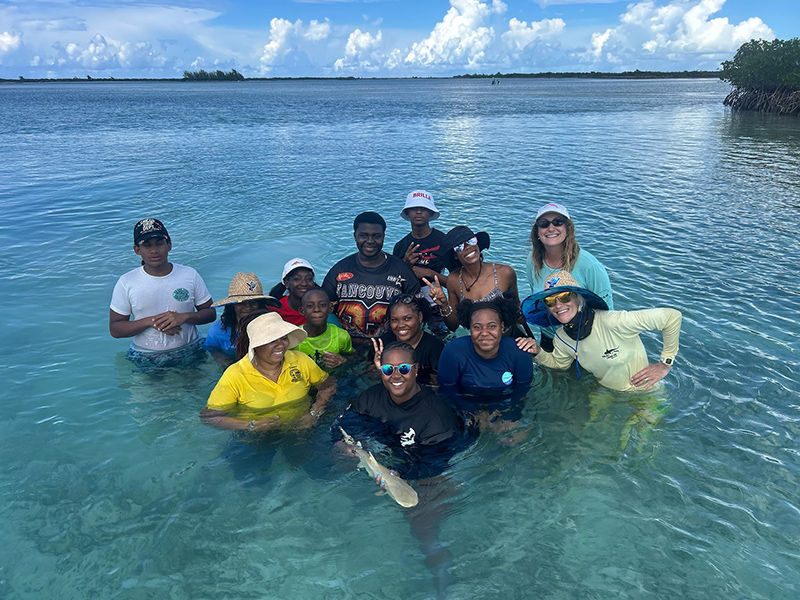October Elasmobranch of the Month: Oceanic Whitetip Shark
- Sharks4Kids

- Oct 8, 2020
- 2 min read
Author: Linda Weiss
Oceanic Whitetip
(Carcharhinus longimanus)
Key Features/Appearance
As their name implies, Oceanic Whitetip sharks’ pectoral, dorsal, and lower lobe of its caudal fins are tipped with white markings in adulthood. Their first dorsal fin is large, broad and rounded. Their pectorals fins are long and rounded at the tip. Black spots can be seen on the second dorsal fin, as well as the anal, caudal and pelvic fins. The They have a rounded, blunt snout. This is a large shark, averaging 3m (10 ft) in length but has been known to grow as long as 4 m (13 ft) and weigh 167 kg (370 lbs) shark. The color on the top side of their body is typically grayish-bronze but may vary to shades of blue or brown and they do they have an interdorsal ridge. They are white underneath, with possibly a slight yellow hue. The teeth of the upper jaw are broad and triangular in shape with serrated edges. The teeth of the lower jaw are more slender and pointed, with some serrations only at the tip. There are roughly 30 teeth in each of the lower and upper jaws.

Image KEN KIEFER
Habitat and Distribution
The oceanic whitetip shark is a highly migratory, pelagic species, usually keeping offshore out in the open ocean. It can be found worldwide in tropical and sub-tropical waters at depths ranging from the surface to 152 meters (500 feet), seeming to prefer the warmer water near the surface.
Diet
Oceanic Whitetip sharks are opportunistic, feeding on a wide variety of sea life including fish such as mahi-mahi, tuna, jacks, oarfish, marlin, and barracuda. They also consume turtles, birds, squid, crustaceans, snails, stingrays and other sharks.
Reproduction
It is believed female oceanic whitetip sharks give birth viviparously every other year. During gestation the embryos are nourished through a placental yolk-sac which is connected to the mother by an umbilical cord. Gestation lasts 10-12 months and litter sizes range between 1- 15 pups, with larger females producing larger litter sizes. The newborn pups average 63 cm (25 inches) in length.
Status
The IUCN Red List of Threatened Species currently lists the Oceanic Whitetip shark as Critically Endangered, with a decreasing population trend.
Threats
Incidental bycatch by the commercial fishing industry in the main threat the oceanic whitetip shark faces. Also, because their fins are very large, they are hunted for their prized fins to be sold in the international shark fin trade, largely for shark fin soup.


References
Florida Museum
Marine Bio
NOAA Fisheries
Oceana
Ocean Conservancy
The IUCN Red List of Threatened Species
Rigby, C.L., Barreto, R., Carlson, J., Fernando, D., Fordham, S., Francis, M.P., Herman, K., Jabado, R.W., Liu, K.M., Marshall, A., Pacoureau, N., Romanov, E., Sherley, R.B. & Winker, H. 2019. Carcharhinus longimanus. The IUCN Red List of Threatened Species 2019: e.T39374A2911619. https://dx.doi.org/10.2305/IUCN.UK.2019-3.RLTS.T39374A2911619.en. Downloaded on 08 October 2020.





















